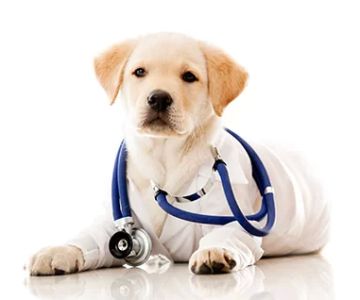How to Stop Your Dog from Becoming Aggressive with Food
Have you ever tried to take your dog’s food away, only to have them growl, snap, or even bite? Food aggression in dogs is a common issue that many pet owners face, and it can be incredibly alarming and frustrating. I’ve been there myself, and I know how challenging it can be to manage. But the good news is, with patience and the right approach, food aggression in dogs can be addressed and corrected. I’m here to share my experience, tips, and expert advice on how to stop your dog from becoming aggressive with food, so you can create a safer and happier environment for both you and your pet.

1946 S Christopher Columbus Blvd, Philadelphia, PA 19148, USA
See DetailsUnderstanding Food Aggression in Dogs
Before diving into solutions, it’s important to understand what food aggression is and why it happens. Food aggression, also known as resource guarding, occurs when a dog becomes possessive over their food. This behavior can range from growling, barking, and snarling to more serious actions like snapping or biting. It's important to note that this behavior is often driven by fear or insecurity rather than a true desire to attack.
When I first noticed food aggression in my dog, Max, it was during feeding time. Max was a sweet and friendly dog, but as soon as his bowl hit the floor, something changed. He would guard his food fiercely and growl if I even came close. I learned quickly that food aggression isn’t just about the dog being “bad” or “mean”; it’s often rooted in a lack of trust or a need to protect something valuable.
Why Do Dogs Exhibit Food Aggression?
Food aggression can stem from a variety of factors. One common reason is past experiences of food scarcity. Dogs that have had to fight for food in the past, perhaps due to being abandoned or poorly fed, might develop an instinct to protect their resources. Other factors can include a dog’s temperament, lack of socialization, or even medical issues that cause discomfort when eating.
Max, for instance, had been rescued from a shelter before I adopted him, and I believe his food aggression was a result of his uncertain past. He was fearful of losing access to food, which led him to guard it. Understanding that this was a learned behavior helped me approach his food aggression with empathy and patience, rather than frustration.
Steps to Stop Food Aggression in Dogs
Now that we’ve established why food aggression happens, let’s move on to how you can stop it. It’s essential to be consistent, patient, and positive throughout the process. Here are some steps that worked for me and many other dog owners:
1. Create a Safe and Calm Eating Environment
Start by ensuring that your dog has a quiet and stress-free environment during mealtime. Dogs with food aggression often feel threatened during feeding time, especially if there are distractions or other animals around. I made sure that Max had his own designated space where he could eat in peace. This not only helped reduce his anxiety, but it also created a predictable routine that made him feel more secure.
2. Gradual Desensitization
One of the most effective methods for reducing food aggression is desensitization. The goal is to teach your dog that having someone near their food doesn’t mean their food will be taken away. Start by standing a few feet away from your dog while they eat. Gradually move closer over time, rewarding them with treats and praise for calm behavior. This process takes time, so don’t rush it. The key is to associate your presence with positive experiences, such as treats or gentle attention.
3. Teach “Leave It” and “Give” Commands
Training your dog to respond to commands like “leave it” or “give” can be incredibly useful when dealing with food aggression. I taught Max the “leave it” command by holding a treat in my hand and saying “leave it” whenever he tried to snatch it. When he backed away, I rewarded him with the treat. Over time, I applied this training to his food bowl, rewarding him for allowing me to be near his bowl without reacting aggressively.
4. Use Positive Reinforcement
Positive reinforcement is key in stopping food aggression. When your dog behaves calmly around food, reward them with treats, praise, or affection. This helps your dog associate good behavior with positive outcomes, which encourages them to repeat the behavior. For Max, every time he allowed me to approach his food without growling, I rewarded him with a treat and praise. Slowly but surely, he started to trust me around his food.
5. Avoid Punishing Aggressive Behavior
It’s important to avoid punishing your dog for food aggression, as this can worsen the problem. Punishment can lead to increased anxiety and fear, which could escalate the aggression. Instead, focus on redirecting their behavior through calm and positive reinforcement. I found that shouting or using forceful methods only made Max more anxious, so I shifted to a gentler, more patient approach.
6. Seek Professional Help if Necessary
If food aggression persists despite your efforts, it may be time to consult a professional dog trainer or behaviorist. Sometimes, food aggression can be tied to deeper behavioral or emotional issues that require expert intervention. A professional trainer can provide personalized guidance and techniques tailored to your dog’s specific needs. I eventually reached out to a trainer when Max’s food aggression didn’t improve, and the additional support made a huge difference in our progress.
My Experience: Overcoming Max’s Food Aggression
Max’s food aggression didn’t disappear overnight, but with consistency, patience, and positive reinforcement, we made incredible progress. After several weeks of training, Max was no longer growling or snapping when I came near his food. I could pet him while he ate, and even put my hand near his bowl without issue. It was a huge relief, and I was able to enjoy feeding time without stress or fear of aggression.
Overcoming food aggression is a journey, but with the right approach, it’s entirely possible to help your dog feel more secure and less possessive of their food. If you’re dealing with a food-aggressive dog, remember to stay calm and compassionate. They’re not being “bad” – they’re simply acting out of fear or insecurity, and with time, you can help them overcome these behaviors.
Every dog is different, and some may take longer than others to adjust. The key is to stay committed to the process and celebrate small victories along the way. Your dog wants to please you, and with a little time and effort, you can build trust and reduce food aggression.










